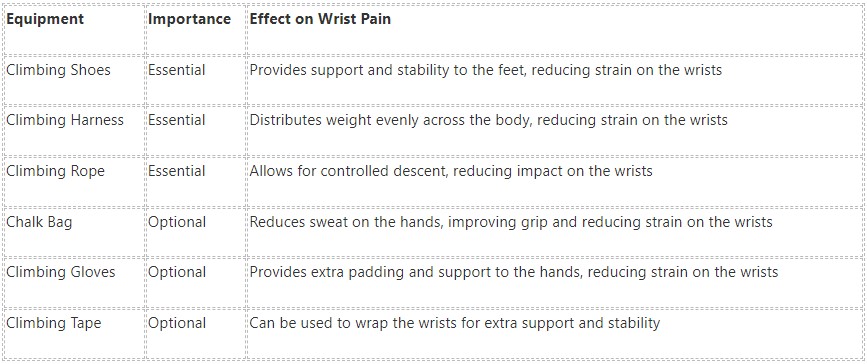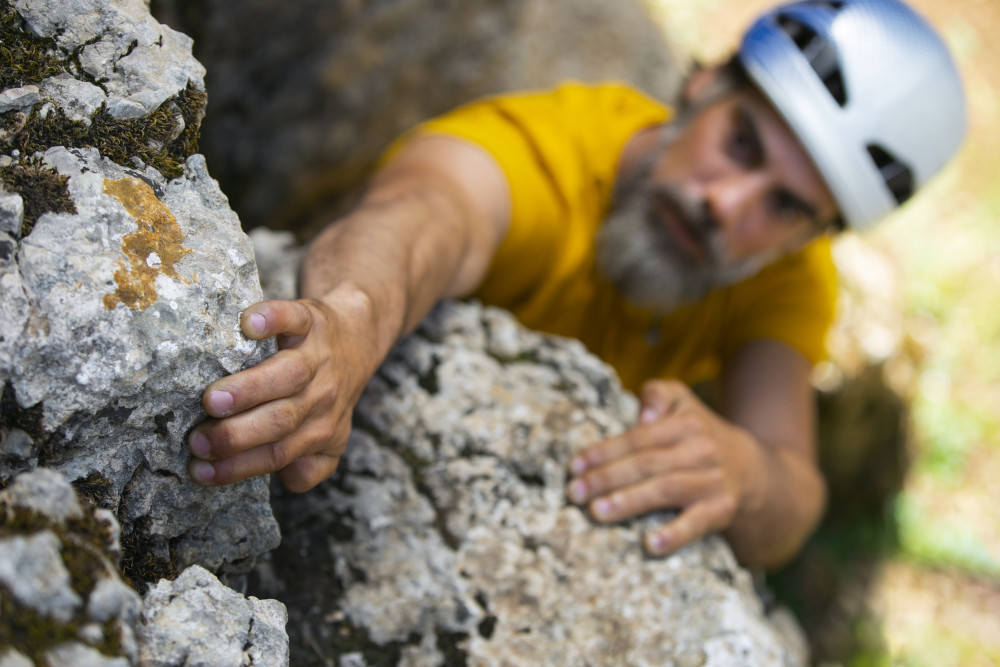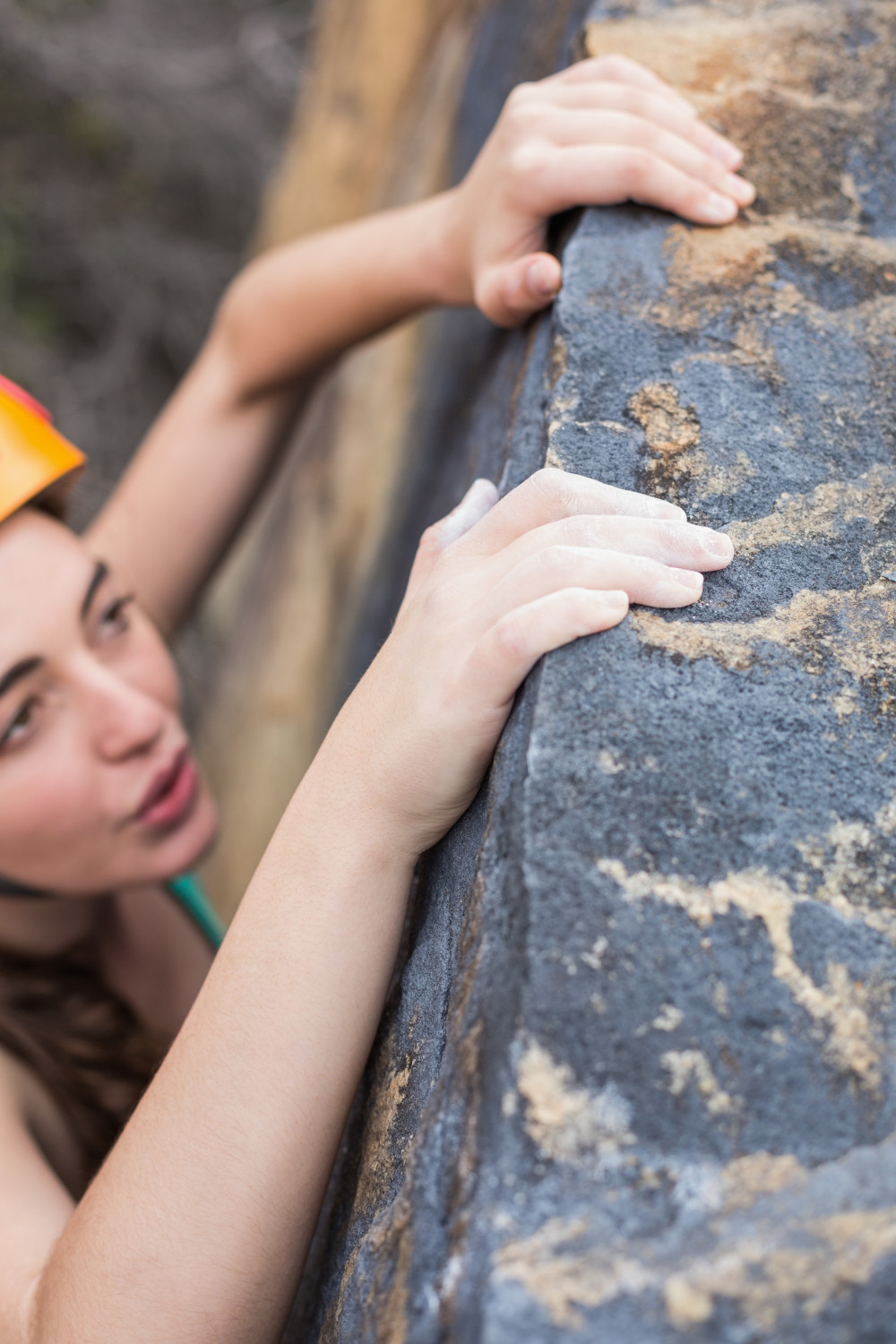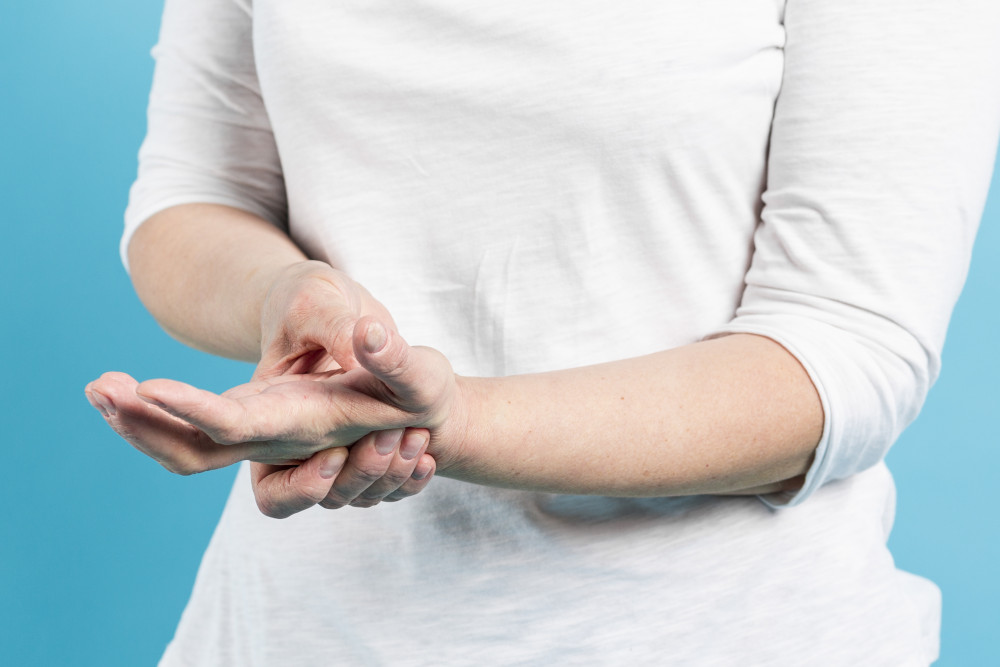Conquering the Climb: Tips to Alleviate Wrist Pain for Climbers
Wrist pain is a common issue that climbers often face, hindering their progress and enjoyment of the sport. Whether you’re a beginner or an experienced climber, understanding the causes of wrist pain and learning effective ways to alleviate it is essential. In this guide, we will explore various strategies to help climbers overcome wrist pain, including the importance of warming up and stretching, choosing the right climbing gear, proper technique and body positioning, strengthening exercises for the wrist and forearm muscles, rest and recovery, and the role of nutrition and hydration. We will also discuss when you should seek professional help for persistent wrist pain and provide long-term strategies for preventing future wrist pain. By implementing these tips, climbers can enhance their climbing performance, reduce the risk of injuries, and continue to enjoy the thrill of conquering new heights.
It is important to address wrist pain to prevent long-term damage. Ignoring or pushing through the pain can lead to chronic issues that can hinder your climbing performance and overall wrist health. In this article, we will explore the causes of wrist pain in climbing, the importance of warming up and stretching, choosing the right gear, proper climbing technique, strengthening exercises, rest and recovery, avoiding overuse injuries, nutrition and hydration, seeking professional help, and long-term strategies for preventing future wrist pain.
Key Takeaways
- Wrist pain in climbing can be caused by overuse, improper technique, and lack of warm-up and stretching.
- Warming up and stretching before climbing can help prevent wrist pain.
- Choosing the right climbing gear, such as wrist supports, can also prevent wrist pain.
- Proper climbing techniques and body positioning can reduce the risk of wrist pain.
- Strengthening exercises for wrist and forearm muscles can help prevent and alleviate wrist pain.
Understanding the Causes of Wrist Pain in Climbing
There are several common causes of wrist pain in climbing. One of the main culprits is overuse and repetitive strain injuries. Climbing requires repetitive movements that put stress on the wrist and forearm muscles. This can lead to inflammation and pain in the tendons and ligaments surrounding the wrist joint. Another cause of climbing wrist pain is improper technique and body positioning. If you are not using proper form while climbing, you may be putting unnecessary strain on your wrists. Weak wrist and forearm muscles can contribute to climbing wrist pain. When these muscles are not strong enough to support the weight and movements required in climbing, it can lead to discomfort and injury.
To identify the source of your wrist pain, it is important to pay attention to when and how the pain occurs. Is it during certain climbing movements or after a specific type of climb? Does the pain radiate from a specific area? Consulting with a healthcare professional or occupational therapist who specializes in climbing injuries can help you pinpoint the cause of your wrist pain and develop a treatment plan.
Importance of Warming Up and Stretching Before Climbing
Warming up and stretching before climbing is crucial for preventing wrist pain and injury. A proper warm-up increases blood flow to the muscles and prepares them for the demands of climbing. It also helps to loosen up the joints and improve flexibility. Stretching before climbing can help to lengthen and relax the muscles, reducing the risk of strains and sprains.
There are specific stretches that can target the wrist and forearm muscles. One stretch is the wrist flexor stretch. Extend your arm in front of you with your palm facing up. Use your other hand to gently pull back on your fingers until you feel a stretch in your forearm. Hold for 30 seconds and repeat on the other side. Another stretch is the wrist extensor stretch. Extend your arm in front of you with your palm facing down. Use your other hand to gently pull back on your fingers until you feel a stretch in the top of your forearm. Hold for 30 seconds and repeat on the other side.
Choosing the Right Gear to Prevent Climbing Wrist Pain

Choosing the right climbing gear is essential for preventing wrist pain. One important piece of gear is a supportive wrist brace or wrap. These can provide stability and compression to the wrist joint, reducing strain and preventing injury. Look for a brace or wrap that is adjustable and provides a snug fit without restricting movement.
Another important gear consideration is climbing shoes. Ill-fitting shoes can cause discomfort and put unnecessary strain on the feet, ankles, and wrists. Make sure to choose shoes that fit properly and provide adequate support for your climbing style.
Proper Climbing Technique and Body Positioning
Proper climbing technique and body positioning can greatly affect wrist pain. When climbing, it is important to use proper form and technique to minimize strain on the wrists. This includes using your legs more than your arms to propel yourself up the wall, keeping your wrists straight and aligned with your forearms, and avoiding excessive twisting or bending of the wrists.
Body positioning is also crucial for preventing wrist pain. Maintaining a balanced and controlled body position while climbing can help distribute the weight evenly and reduce strain on the wrists. This includes engaging your core muscles, keeping your hips close to the wall, and using your legs to push yourself up rather than relying solely on your arms.
Strengthening Exercises for Wrist and Forearm Muscles
Strengthening the wrist and forearm muscles is important for preventing wrist pain and injury. Strong muscles can better support the joints and handle the demands of climbing. Several exercises can help strengthen these muscles.
One exercise is wrist curls. Hold a dumbbell or a small weight in your hand with your palm facing up. Rest your forearm on a flat surface with your wrist hanging off the edge. Slowly curl your wrist up towards your body, then lower it back down. Repeat for 10-15 repetitions and switch to the other hand.
Another exercise is reverse wrist curls. Hold a dumbbell or a small weight in your hand with your palm facing down. Rest your forearm on a flat surface with your wrist hanging off the edge. Slowly curl your wrist down towards the ground, then lift it back up. Repeat for 10-15 repetitions and switch to the other hand.
Rest and Recovery for Wrist Pain Relief
Rest and recovery are crucial for relieving wrist pain and allowing the body to heal. If you are experiencing wrist pain, it is important to take a break from climbing and give your wrists time to rest. Continuing to climb through the pain can worsen the injury and prolong the recovery process.
During this rest period, you can focus on other aspects of your climbing training, such as strength training or flexibility exercises that do not put strain on the wrists. It is also important to incorporate rest days into your climbing routine to allow for overall recovery and prevent overuse injuries.
Avoiding Overuse and Repetitive Strain Injuries
Overuse and repetitive strain injuries are common in climbing and can lead to wrist pain. To avoid these types of injuries, it is important to listen to your body and give it time to recover between climbing sessions. Avoid excessive training or pushing yourself too hard without proper rest and recovery.
It is also important to vary your climbing routine and incorporate different types of climbs and movements. This can help prevent overuse of specific muscles and joints, including the wrists. Paying attention to proper technique and body positioning can help reduce the risk of overuse injuries.
Nutrition and Hydration for Climbing Performance and Recovery
Proper nutrition and hydration are important for climbing performance and recovery, including wrist health. Eating a balanced diet that includes a variety of fruits, vegetables, lean proteins, whole grains, and healthy fats can provide the necessary nutrients for muscle repair and recovery. It is also important to stay hydrated by drinking enough water throughout the day.
Certain foods can also help reduce inflammation in the body, which can contribute to wrist pain in sports and other activities. Foods rich in omega-3 fatty acids, such as salmon, walnuts, and flaxseeds, have anti-inflammatory properties. Incorporating foods high in antioxidants, such as berries, spinach, and kale, can help reduce oxidative stress in the body.
Seeking Professional Help for Persistent Wrist Pain
If you are experiencing persistent wrist pain that does not improve with rest and self-care measures, it is important to seek professional help. A physical therapist or occupational therapist who specializes in climbing injuries can assess your condition and provide appropriate treatment options.
They may recommend additional imaging tests, such as an X-ray or MRI, to further evaluate the extent of the injury. Treatment options may include physical therapy exercises, manual therapy techniques, or in some cases, surgery. It is important to follow the guidance of a healthcare professional to ensure proper healing and prevent further damage.
Preventing Future Wrist Pain with Long-Term Strategies
Preventing future wrist pain requires incorporating long-term strategies into your climbing routine. This includes maintaining a regular stretching and strengthening program for the wrist and forearm muscles. It is important to continue to warm up and stretch before each climbing session to prepare the muscles and joints for the demands of climbing.
Proper technique and body positioning should also be prioritized to minimize strain on the wrists. Regular rest days and proper rest and recovery periods should be incorporated into your climbing schedule to prevent overuse injuries. Paying attention to nutrition and hydration can support overall muscle health and recovery.
Wrist pain is a common issue in climbing that should not be ignored. It is important to address wrist pain to prevent long-term damage and maintain optimal climbing performance. Understanding the causes of wrist pain, warming up and stretching before climbing, choosing the right gear, using proper technique and body positioning, strengthening the wrist and forearm muscles, resting and recovering, avoiding overuse injuries, prioritizing nutrition and hydration, seeking professional help when needed, and incorporating long-term strategies are all essential for maintaining wrist health in climbing. By prioritizing wrist health, you can continue to enjoy climbing while minimizing the risk of injury. Your first step toward healing and feeling better is to schedule an appointment for a professional evaluation. Schedule an appointment today – complete and submit the request form by the link: https://sportscare-armworks.com/request-an-appointment/. Choose the preferred service and location in the Portland area. If you contact us after business hours, we will get back to you the next business day. We look forward to hearing from you!





